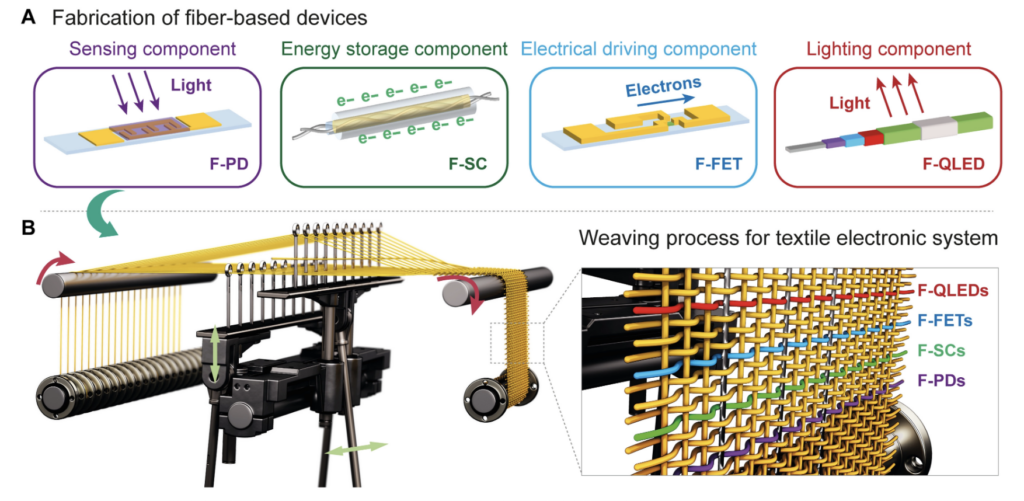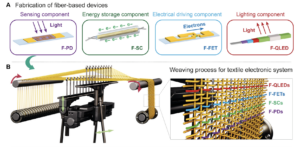Researchers from the University of Cambridge have recently developed a novel electronic textile architecture that is truly form-factor-free and industrially scalable. This innovative approach enables seamless integration of electronic components into textile fibers, paving the way for a new generation of multifunctional wearable devices. The system leverages advanced materials, fabrication techniques, and integration methods to create a flexible and robust e-textile platform.

The research team focused on overcoming the challenges of integrating electronic components into textile fibers without compromising their mechanical properties or scalability for mass production. To achieve this, they designed and fabricated multifunctional fiber devices that can be easily woven into textiles. These fibers are capable of hosting electronic components such as sensors, actuators, and communication devices, while maintaining the flexibility, strength, and durability of the fabric.
By seamlessly integrating electronic components into textile fibers without compromising their mechanical properties, researchers have demonstrated the potential for mass production and versatile applications of e-textiles. This innovation promises to revolutionize various industries, including healthcare, sports, fashion, and military applications, by offering more comfortable, adaptable, and functional garments. As wearable electronics become an integral part of our daily lives, the advancements in electronic textile technology showcased in this research will play a vital role in shaping a future where smart clothing becomes the norm.
While the researchers do not explicitly mention display technology, the breakthrough in seamlessly integrating electronic components into textile fibers has the potential to pave the way for incorporating display technology into e-textiles as well. The development of multifunctional fiber devices could lead to innovations in wearable displays, including flexible screens or light-emitting fibers, that can be woven into fabrics. As electronic textile technology continues to evolve, it is likely that display capabilities will become an important aspect of next-generation wearables, enabling more interactive and immersive experiences in various applications.
Reference
Lee, S., Choi, H. W., Figueiredo, C. L., Shin, D.-W., Moncunill, F. M., Ullrich, K., Sinopoli, S., Jovančić, P., Yang, J., Lee, H., Eisenreich, M., Emanuele, U., Nicotera, S., Santos, A., Igreja, R., Marrani, A., Momentè, R., Gomes, J., Jung, S.-M., … Kim, J. M. (2023). Truly form-factor–free industrially scalable system integration for electronic textile architectures with multifunctional fiber devices. Science Advances, 9(16), eadf4049. https://doi.org/10.1126/sciadv.adf4049

